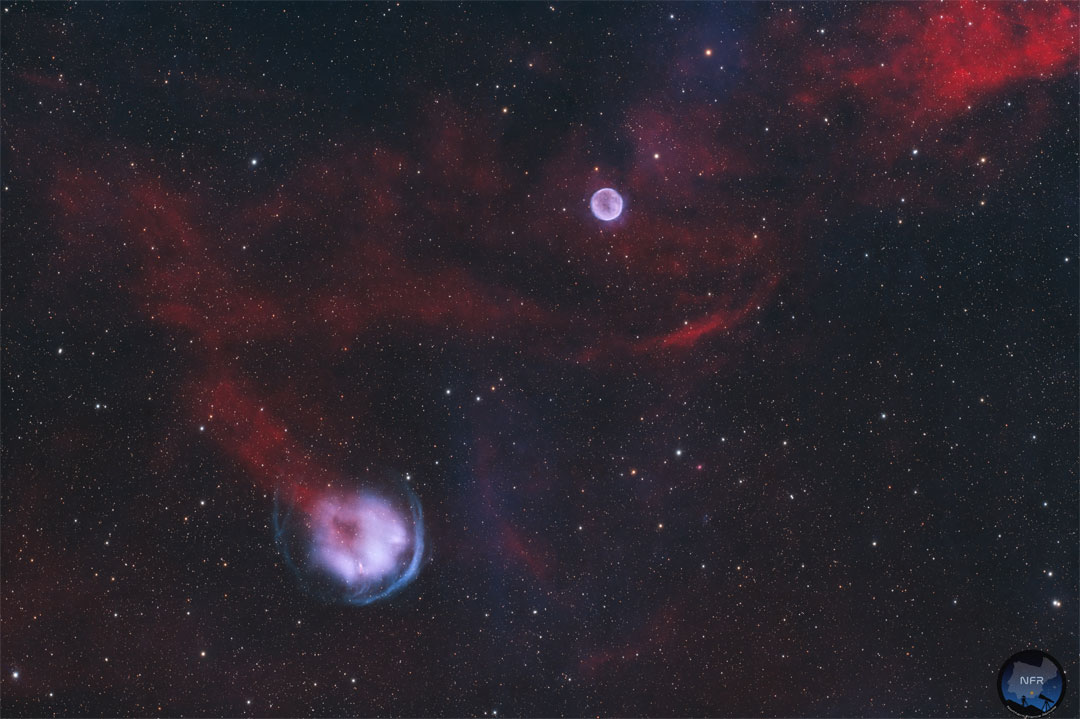2024年2月12日
HFG1 & Abell 6: Planetary Nebulae
Image Credit & Copyright: Julien Cadena & Mickael Coulon; Text: Natalia Lewandowska (SUNY Oswego)
Explanation: Planetary nebulae like Heckathorn-Fesen-Gull 1 (HFG1) and Abell 6 in the constellation Cassiopeia are remnants from the last phase of a medium sized star like our Sun. In spite of their shapes, planetary nebulae have nothing in common with actual planets. Located in the bottom left part of the featured photo, HFG1 was created by the binary star system V664 Cas, which consists of a white dwarf star and a red giant star. Both stars orbit their center of mass over about half an Earth day. Traveling with the entire nebula at a speed about 300 times faster than the fastest train on Earth, V664 Cas generates a bluish arc shaped shock wave. The wave interacts most strongly with the surrounding interstellar medium in the areas where the arc is brightest. After roughly 10,000 years, planetary nebulae become invisible due to a lack of ultraviolet light being emitted by the stars that create them. Displaying beautiful shapes and structures, planetary nebulae are highly desired objects for astrophotographers.
Tomorrow’s picture: a wolf moon
HFG1和Abell 6: 行星状星云
影像提供与版权: Julien Cadena & Mickael Coulon; 文稿: Natalia Lewandowska (SUNY Oswego)
说明: 仙后座内的Heckathorn-Fesen-Gull 1(HFG1)和Abell 6这样的行星状星云,是像太阳这类的中型恒星在生命最后阶段所留下的孑遗物。纵然形状相近,但行星状星云与真正的行星毫无相同之处。位于主题影像左下方的HFG1是由双星系统V664 Cas所产生的,而此系统的成员分别为白矮星和红巨星。这两颗恒星绕着它们共同的质量中心运行,周期大约为半个地球日。V664 Cas以地球上最快火车的300倍速度,带着星云一起运行,它所产生的泛蓝弧形震波挤压周围的星际物质,尤其以震波最明亮处的交互作用最为强烈。大约10,000年之后,由于产生星云的恒星所辐射的紫外光减弱,行星状星云会变得隐不可见。行星状星云具有美丽的形状和结构,因此是受天文摄影者高度青睐的天体。
明日的图片: a wolf moon








There seems to be something in the cluster in the lower left corner, like a statue, gold above and stone-like below.
I found it, too. A tiny one. Kind of like the Statue of Liberty.